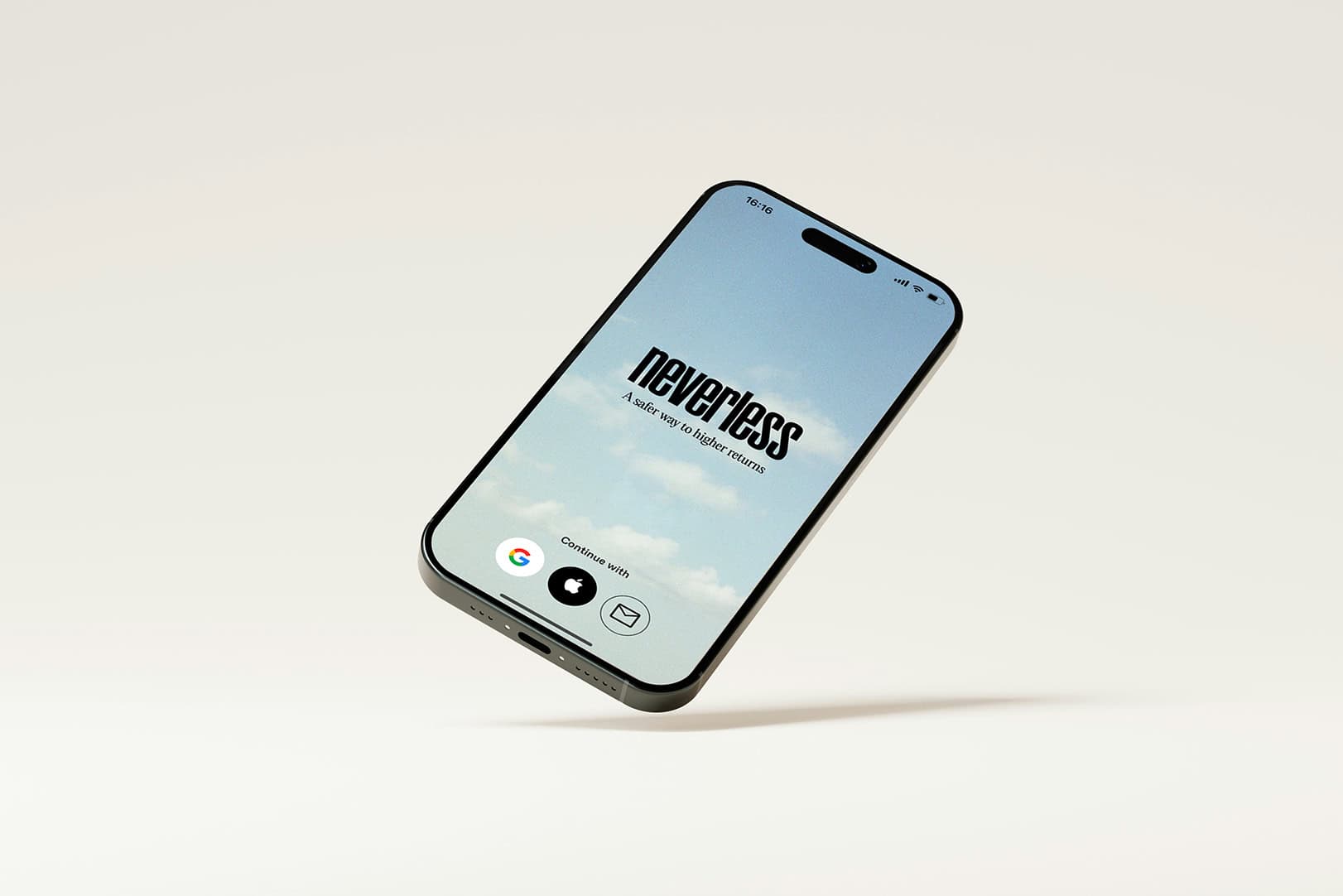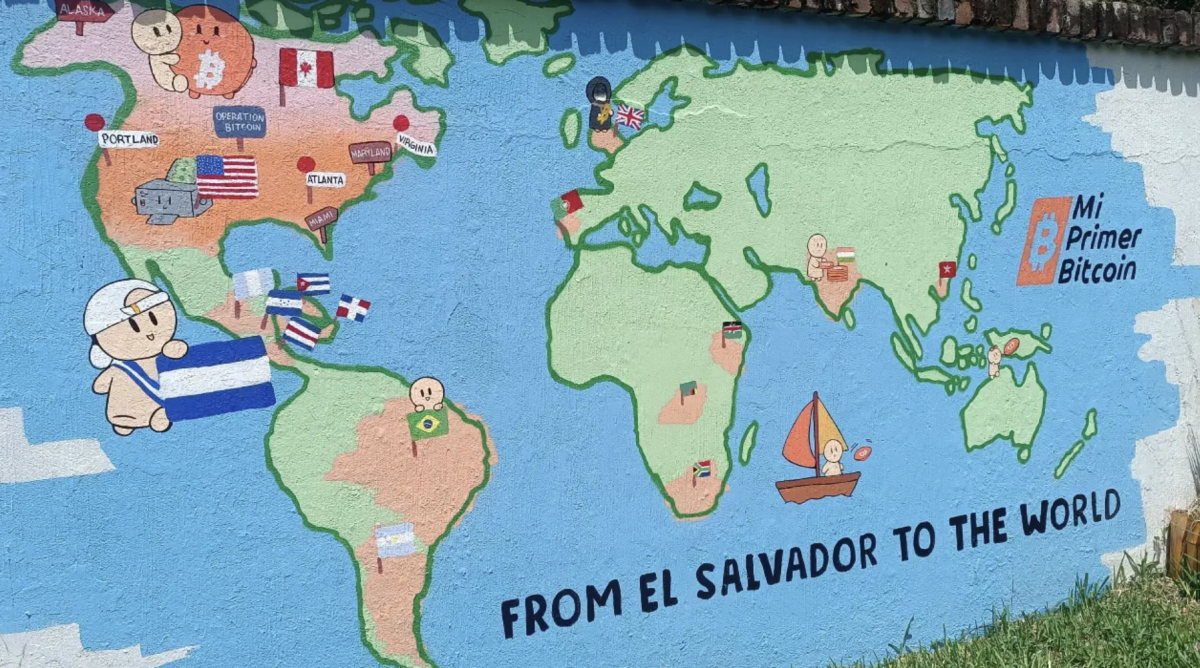By any measure,
Richard Garwin is one of the most decorated and successful engineers of the 20th century. The IEEE Life Fellow has won the Presidential Medal of Freedom, the National Medal of Science, France’s La Grande Médaille de l’Académie des Sciences, and is one of just a handful of people elected to all three U.S. National Academies: Engineering, Science, and Medicine. At IBM, where he worked from 1952 to 1993, Garwin was a key contributor or a facilitator on some of the most important products and breakthroughs of his era, including magnetic resonance imaging, touchscreen monitors, laser printers, and the Cooley-Tukey fast Fourier transform algorithm.
And all that was
after he did the thing for which he is most famous. At age 23 and at the behest of Edward Teller, Garwin designed the very first working hydrogen bomb, which was referred to as “the Sausage.” It was detonated in a test code-named Ivy Mike at Enewetak Atoll in November 1952, yielding 10.4 megatons of TNT. (The largest detonation before Ivy Mike was of a bomb code-named George, which yielded a mere 225 kilotons.)
Richard Garwin
Richard Garwin is an IBM Fellow Emeritus, an IEEE Life Fellow, and the designer of the first working hydrogen bomb.
Not until 2001—50 years after Garwin’s work on the bomb—did his pivotal role become publicly known. The definitive history of the hydrogen bomb, Richard Rhodes’s
Dark Sun: The Making of the Hydrogen Bomb, published in 1995, has barely a page about Garwin. However, in 1979, after suffering a heart attack and contemplating his mortality, Teller sat down with the physicist George A. Keyworth II to record an oral testimony about the project. Teller’s verbal reckoning was kept secret for 22 years, until 2001, at which time a transcript was obtained by The New York Times.
In the transcript, Teller discounts the role of the mathematician
Stanislaw Ulam, who was thought to have been Teller’s partner in what is still called the Teller-Ulam configuration. This “configuration” was actually a theory-based framework that envisioned a two-stage thermonuclear device based in part on a fission bomb (the first stage) that would generate the enormous temperatures and pressures needed to trigger a runaway fusion reaction (in the second stage). In the same transcript, Teller lavishes praise on Garwin’s design and declares, “that first design was made by Dick Garwin.” Because of the enduring secrecy around that first thermonuclear bomb, Garwin’s role had been largely unknown outside of a small circle of Los Alamos physicists, mathematicians, and engineers who were involved with the project—notably Teller, Enrico Fermi, Hans Bethe, and Ulam. Teller died in 2003.
Starting in the early 1950s and continuing in parallel with his career at IBM, Garwin also served as an advisor or consultant to U.S. government agencies on some of the most vital tech-related issues, and some of the most prestigious panels, of his times. That work continues to this day with his service as a member of
the Jason group, the elite panel that offers technical and scientific advice, often classified, to the U.S. Defense Department and other agencies. Garwin, who has served in advisory roles under every U.S. president from Dwight Eisenhower to Barak Obama, has also been known for his writing and speaking on issues related to nuclear proliferation and arms control.
IEEE Spectrum spoke via videoconference with Garwin, now 96, who was at his home in Westchester County, New York.
Richard Garwin on:
Returning to Los Alamos to work on the hydrogen bomb
What it’s like to hold plutonium
Designing “the Sausage”
His proudest contributions during his time at IBM
His friendship with Enrico Fermi
Whether he considers himself an engineer or a physicist
His efforts in the nuclear arms-control movement
The future of nuclear and renewable energy
Garwin arrived at Los Alamos for the second time to work as a physicist in May of 1951. In the interview, he spoke early on, and without prompting, about Edward Teller’s ideas at the time about how a thermonuclear (fusion) bomb would work. Teller had not had much success translating his ideas into a working bomb, in part, Garwin says, because Teller did not understand that the deuterium fuel would “burn” (react) when it was very highly compressed, as it would be in the basic, Teller-Ulam conception of a hydrogen bomb.
Garwin: When I got to Los Alamos for the second time, in 1951, I had already known Edward Teller. He was on the physics faculty of the University of Chicago. And I went to Edward and I said, “What is the progress on your ideas for burning deuterium?” And he told me that he had met with the mathematician, Stanislaw Ulam, who worked for him. Ulam was in his small group. Teller was allowed only about four people in his group, much to his distress. And he resented that. But it was the right choice because you would need an atomic bomb, according to the Ulam-Teller concept. And there was no sense diluting the effort on working on the atomic bomb.
But Edward had had for many years a wrong theorem which he had never written down. He confesses this in his 1979 paper [
Editor’s note: This is the statement dictated to Keyworth after Teller’s heart attack] in which he gives me credit for the hydrogen bomb. But his theorem was that compression wouldn’t help. That if you couldn’t burn deuterium at normal liquid density—I think it’s 0.19 grams per cubic centimeter—you can’t burn it at 100-fold or 1,000-fold density. Everything would just happen faster, 100 times faster, or 1,000 times faster. This was a wrong theorem. He had never written it down, and it was wrong. And when he told Stan Ulam, he said in his 1979 effort, that he had been wasting a lot of time talking to Stan.
And so Edward decided that I would write it [a detailed engineering design for a working hydrogen bomb] up and give him a fair shot. And Ulam’s idea, according to this still-secret document in the Los Alamos report library, was given away by the title of the report. The title of the report that is, and always has been, unclassified. The first part of the title was: “Hydrodynamic Lenses.” The second part of the title was: “and Radiation Mirrors.” [
Editor’s Note: The paper, published in secret in March 1951, is titled, “On Heterocatalytic Detonations I: Hydrodynamic Lenses and Radiation Mirrors,” and it is the paper that contains the first description of the Teller-Ulam configuration.]
That was the option that Teller thought was best. So I went to Teller in his office at Los Alamos, and I asked him what had happened. He said that he had written up the meeting he had had recently with Stan Ulam and that Ulam had proposed acoustic lenses, of which we had 32 on the original implosion weapon [detonated at the Trinity Test near Alamogordo, N.M.]. So you could get 32 segments of the sphere. They had fast and slow explosives. And so most of the mass of the explosive—of the 8 tons of the weapon, probably 4 tons was the lenses, which didn’t count in accelerating the plutonium.
And so that was the Nagasaki bomb and the one that was tested in Alamogordo on July 16, 1945. [Teller] told me about his report, and that was the end of the conversation, except that he said what he really needed was a small experiment to prove to the most skeptical physicists that this was the way to build the atomic bomb and the hydrogen bomb. And I took that as a challenge. I started and tried to make a 20-kiloton experiment, but I couldn’t make one that was sufficiently convincing and decided to make it full scale. And so that’s what I did. I published my report of the Sausage based on the concepts current at the time. I wrote that up and published it in the classified report library, also on July 25th, 1951.
And it was detonated, as Teller says later, “exactly as Dick Garwin had devised it,” on November 1, 1952, so just 16 months afterwards. And it could never have been done faster. And the only way it got done that fast was because I wrote the paper all by myself. I was sitting in the office with Enrico Fermi. I had two offices: One was with Fermi in the theoretical division, and the other was in the physics division, where I was working on developing a means for accelerating deuterons and protons to 100 kilovolts.
Garwin took exception to my suggestion that Teller “entrusted” him with the design of the first thermonuclear bomb. He also revealed poignant details about the daily routine in his office, which he shared with Enrico Fermi.
Garwin: [Teller] challenged me. He didn’t entrust me. He didn’t know that it could be done. But he said, “I’d like a small experiment that would persuade the most skeptical and that this is the way to do it.” And it persuaded the person who counted—It persuaded [Los Alamos Director] Norris Bradbury, and Norris Bradbury [then allocated more resources for continued work on hydrogen bombs], without asking anybody else, because that’s how things worked then. Truman had said, “We’re going to build a hydrogen bomb,” and nobody knew how to build it. But Truman didn’t say that. People thought that Edward Teller probably knew how to build it. But he had been working on it since 1939, and he didn’t know how to build it, either. He continually complained that he didn’t have enough people. But any time, he could have written down his theorem and found out that it was wrong. But he found out it was wrong when he wrote down what he and Ulam had talked about.
When I sat in the room, it was a very small room, which had two desks, my desk faced Fermi’s desk. I could see him face-to-face. He taught me a lot the first year and the second year. But only the first year did I share an office with him. And that year, he worked with Stan Ulam in the mornings. The coders would come in. And they would deliver the code, the results of their work. They had been following a spreadsheet that Fermi had started. The first few lines he had actually calculated and sat next to the coder and calculated the first few lines of the spreadsheet, which were various zones along the axis of this infinitely long cylinder. And it started at one end, which was enriched with tritium. And so it reacted about 100 times as fast as deuterium itself. And so then, the second line across the spreadsheet would be the second set of zones along the axis. And the third line would be the third set of zones, and so on. And so they would come in with the whole thing, 100 zones, perhaps. And Fermi would discuss that with the coder, and then he would think of what to calculate next with Stan Ulam.
What’s it like to hold plutonium in your hands? Garwin is among the few people on the planet who can tell you.
Garwin: You can put plutonium in your pocket if it’s coated with nickel, as were the original plutonium hemispheres for the atomic bomb. I’ve held it in my two hands. It was a very dangerous thing to do. But at Los Alamos, you could be admitted to the sanctum and hold the nickel-plated plutonium in your hands. It’s warm, like a rabbit. And of course, if you isolate it, it gets even warmer.
Garwin spoke about the basic design of the Sausage, the first thermonuclear bomb. He disclosed how the device persuaded Hans Bethe, a star of the Manhattan Project and later, like Garwin, active in arms-control causes, about the viability of thermonuclear weapons. In a touching aside, he remembered his wife, Lois Garwin, to whom he was married from 1947 until her death in 2018.
Garwin: In order to get the Sausage to work, you needed to have a different way of getting equal forces on all sides. And that was the design of the full-size bomb. We used a normal atomic bomb at one end, and then, as has been revealed since then, a cylinder containing deuterium and surrounding that, a cylinder containing hydrogen. And beyond that, the very heavy container. All of that was at liquid-hydrogen temperature or at liquid-deuterium temperature. I can’t go into more detail at present, even now. So I made a full-size weapon. And it was very big. But I argued with Hans Bethe, who was head of various committees for building the atomic bomb, the hydrogen bomb, even though he didn’t want to build it. He wanted to prove that it couldn’t be built. But he was an honest man and excellent physicist. And so he accepted that it could be built.
But I never saw a weapons test, not even in Nevada. Never saw a weapons test. But I traveled to Hawaii a couple of times during the Ivy series and the George series in order to talk to people who came from the test site back to Hawaii to talk to me and others.
I want to mention my wife, Lois Garwin. I could not have done any of this without her. She died in 2018, February 4. And she was the one who took care of the children, except for waking up and diapering them or feeding them a bottle at night, because I could wake up and go to sleep much faster than she.
Garwin also weighed in on one of the most enduring controversies of nuclear-weapons history, which was the relative contributions of Teller and Ulam to the Teller-Ulam configuration. Garwin was asked, was it really the two of them working on this, or was it all Edward Teller?
Garwin: It was really all Edward Teller. I have volunteered that in various interviews. Ulam was a very good mathematician. But he was interested in things whether they were useful or not. He reminded me of Samuel Eilenberg, a mathematician at Columbia with whom I used to have lunch, together with I.I. Rabi and other Nobel Prize winners. Eilenberg used to say, “It’s like a tailor. Sometimes, you make a suit which has three sleeves, sometimes two sleeves, whatever looks best. Sometimes it’s useful, sometimes it’s not. And that’s mathematics for you.”
Why did Teller choose Garwin, a 23-year-old newly minted physicist, over the many staff physicists at Los Alamos to design that first hydrogen bomb?
Garwin: Well, he probably was influenced by something that I found out only in 1981. And that was in an article in Science magazine. Fermi had told people very publicly that I was the only true genius he had ever met. And it was too late to ask Fermi, who died in 1954. He had said that at a meeting at Fuller Lodge at lunchtime. That was the school for boys at Los Alamos that was taken over at the beginning of the atomic bomb program. I was not at that lunch. And he had said, “I’ve met the only true genius I have ever met.” And the people started preening themselves and so on, expecting to be named by him. And then Fermi said, “His name’s Dick Garwin.” And I suppose I had been working, at that time, on the hydrogen-bomb paper. Anyhow, so that’s all I know. Those people were very disappointed.
Garwin was asked which, of the many things he invented or helped invent during his career at IBM, he was most proud of. He did not hesitate in answering.
Garwin: Really the Cooley-Tukey algorithm because I was the midwife for that. I didn’t invent it. I just sat next to John Tukey. I sat next to Tukey so I could eat his dried prunes, with his permission. I had worked with him in 1953 to ’54 on the intelligence project of the Killian Committee. There were 67 consultants who were members of the Killian Committee. It was a very well-received report. And I worked for six months with NSA under William O Baker, who was the Vice President for research at Bell Labs. So I worked halftime there for six months. I can’t explain what we worked on. But I met all the people, Bill Friedman [legendary cryptanalyst William F. Friedman] and others.
I worked also with
Jerry Wiesner. The first time I saw him, in the Lamp Light study, he said, “You know, Dick, you can either accomplish something or get credit for it, but not both.”
PSAC was the President’s Science Advisory Committee. If you
look in Wikipedia, you’ll find many items for PSAC. It was formed in 1957 as part of the Killian Committee report. Eisenhower created PSAC, and Killian was the first head. [Editor’s note: James Rhyne Killian was the 10th president of MIT, from 1948 to 1959.] I had two terms on PSAC. One was with Kennedy, beginning January 21, 1961, and the other one was with Nixon, his second term.
When I came home from the PSAC meeting, a two-day meeting [in 1963], I wrote the person who was head of mathematics at Yorktown Heights. I was, at that time, head of the
[IBM] Watson Scientific Laboratory, at Columbia University. And so I wrote to him and I said, “Can you find me a numerical analyst, somebody who can code this up and who will go to Princeton and talk with Tukey.” And he said, “Cooley is your man.”
Jim Cooley wasn’t enthusiastic about stopping what he was doing and going to Princeton. He needed additional influence. So I wrote him and I told him what it was that I wanted him to do. And in fact, the idea came not from Tukey, but it came from a colleague of his at [Government Communications Headquarters] in England [mathematician
I. J. Good], a fellow whom we both knew from our days working on the Killian Committee. This was persuasive to Cooley, that his employment would be dependent upon his going to Princeton and talking to Tukey. So Cooley went to Princeton, and he talked to Tukey, and I don’t know for how long, but then he sat down and he wrote a Fortran program. And I then went to the IBM Science Advisory Committee, which was headed by Jerome Wiesner, and persuaded them to make this a free-for-everybody Fortran program rather than charging money for it. And so that was my additional contribution. And I then started distributing the program within a few months. I would send the name of the program and people could write in and get it. But mostly, they weren’t persuaded.
Garwin counted Enrico Fermi among his closest friends and associates. I asked him if there was something about Fermi that most people did not know, and that he wanted to share.
Garwin: He was a very ordinary-appearing person, but he had great round eyes. And in fact, I gave a talk at the IISS, the International Institute of Strategic Studies, meaning I was on the board for nine years while my daughter, Laura, was a graduate student at Oxford. And then at Cambridge, she was in the first batch of women Rhodes Scholars. And I saw somebody in the front row who looked very familiar. And I realized that it was his eyes. That he had Fermi’s eyes. It was Giulio Fermi, his son. I had met Giulio when he was 12 or 13 years old at their home in Chicago.
And I knew Nella, the older scion, who was a daughter. And I knew Laura, Laura Fermi, after whom our daughter, Laura, is named. She was a refined person. But Enrico was self-taught. There was an engineer, a friend of his father. His father, I think, worked for the railroad. The engineering friend would lend him books and Enrico would read them and learn them and learn the various languages involved. And he would solve the problems in the books, many of which were not easy, but nothing was too little for him or too big. He kept very good notes, in his laboratory notebook. And actually, he would write in my laboratory notebook at Los Alamos, and I would lock it up in the safe at night so that he wouldn’t have to do that.
There he would record the four shock equations and derive them and teach me how to do things like that. The degree to which he was self-taught… He organized the kids, the
ragazzi, the kids of whatever street it was in Rome. And when he got to Rome from where he had gone to college and went to graduate school, he brought all kinds of people. Some of whom joined him in Los Alamos.
We were good friends of the Fermis in Los Alamos. And Lois and Jeffrey, my oldest boy, were with me in the summers. And then gradually, the other two children, Tom and Laura, joined us. So there were many years when we had rental homes in Los Alamos because people were always going away for the summer.
Garwin, an IEEE Life Fellow, is renowned for his ability to not only understand theory but also to put it to practical use. Nevertheless, his answer to the question of whether he considers himself an engineer or a physicist was surprising.
Garwin: I’m a physicist. I don’t think there’s a ranking. I just don’t know enough to qualify as an engineer.
All through the 41 years he was working for IBM, Garwin was also extraordinarily active on countless government committees and boards and also active in the nuclear arms–control movement. I asked him how he was able to maintain such an active and public professional life outside of IBM without raising eyebrows.
Garwin: My agreement with IBM was that they would not know what I was working on [outside of IBM]. They wouldn’t know what I testified about, and so on. And they signed an employment contract. Because otherwise, I knew that they would want to approve it. They would have lawyers saying, “Is this a good thing for us to do or not?” And so then when I started testifying in Congress and the testimony was public, I decided that I should tell IBM. I told them the same day. I gave them a copy of the testimony at the same time I gave it. I printed 100 copies, and we stood around the dining room table in our house, and whatever children were of suitable age would sort these things or unsort these things and staple them together and put them into a suitcase. One hundred copies of 10 pages of testimony is a lot to carry. And I would lug them to the airport for the early morning flight to Washington.
And IBM was as good as its word. I think they considered firing me a couple of times, but once I saw Manny Piori, who was the first director of research, and then he was head of the IBM Science Advisory Committee, and then he was various other things. Once I saw him furiously writing the head of IBM, who was, at that time, Thomas J. Watson Jr. And he was writing him to tell him that whatever they did, they shouldn’t fire me.
Not surprisingly, Garwin had strong opinions about the United States’ planned resumption of the production of plutonium, intended for a new missile warhead, the W87-1.
Garwin: That’s very bad, but it’s a matter of monkey see, monkey do. But it’s not that we need to do these things. It’s just that they don’t want to be caught short when the Russians resume testing or the Chinese resume testing. [The Chinese] have a lot to learn from their tests because they’ve had only 40-some total in history compared with the thousands or more, mostly underground. And underground tests up to 5 megatons, with the antiballistic missile warhead. So they don’t need to do this, but they don’t want to be caught short. And people say, “Look, the Russians are testing,” and the Russians have manufactured plutonium and you aren’t. They don’t really need new plutonium.
Somebody in Congress would say that the Russians are ahead of us, that they have these thousands of…they had 60,000 weapons at one time in 1962, I guess. And they could have those weapons that would destroy whole cities. And the United States doesn’t have a comparable number of weapons. They could destroy industrial centers. Anyhow, by appearance, the Americans would lose the race for appearance.
Not that the Russians could do anything useful with their weapons, but Russians aren’t constrained by logic. The Chinese, unfortunately, under Xi Jinping, have lost their way. Their way really is to make things and sell them to the world, even though the labor is transferring elsewhere as a matter of relative size and cost. But I had hoped that before Xi Jinping, beginning with Deng Xiaoping, I guess, that the Chinese would see the benefit of being supplier to the world. But now we have a kind of trade war with China. And I think that’s a big mistake for the United States. The United States ought to encourage China. And although we should set tariffs, the tariffs ought to be modest, in my opinion.
Garwin also had strong feelings about the surging funding for small, modular nuclear power reactors in the United States and elsewhere. I asked him if he thought these reactors were likely to succeed economically where larger reactors had not.
Garwin: The answer is no. I think that they won’t succeed because of economics. And the beginning of subsidy for those reactors, they want to subsidize the “valley of death.” But you can’t do that because there are many competing firms. You can subsidize all you want, but you can’t get out of the fact that they’re uneconomical. They’re not economical, and they will find out when they try to build them and when they exhaust the subsidy, and they can’t make it work. So no, I don’t think that they will work. I think it will put us in a large plutonium economy in order to breed plutonium and reprocess the material that accumulates in the reactors.
Does he think the only way to progress toward a carbon-neutral energy regime is with renewables?
Garwin: Yes. I think that using—I’m sorry to claim credit for something, but nobody has picked it up. A few years ago, I published a paper on green hydrogen and green ammonia. And the key is to use the steep trench up the west coast of the United States and Chile and the other countries in Latin America. Within 100 miles of the coast, there is this undersea trench where you can store hydrogen in ordinary weighted culverts. So it sits on the bottom. And it goes down to five kilometers or more. And all you need is one kilometer for 100 bar. You would have land-based solar and land-based wind turbines. They would be constantly electrolyzing either at surface or at depth, one way or another. So you would accumulate hydrogen. You would store it in a bladder which is held down by the negative buoyancy of the culverts. And it would just displace the water as you fill the bladder and as you empty the bladder during hydrogen usage, you would send the hydrogen back to shore. All that was worked out in my paper. And I even say how you would start by making green ammonia. You would get nitrogen from the atmosphere and then combine it with the hydrogen from the electrolysis. You can start small.
And you can just electrolyze and convert to ammonia and have it trucked away. And it would initially be sold at a high price, which would work because it would be sold for fertilizer. There’s a large market for fertilizer. And then when that gets saturated because of too much production, then you’d have to start using green ammonia for fuel anyhow.
An abridged version of this article appears in the September 2024 print issue as “5 Questions for Richard Garwin.”
























